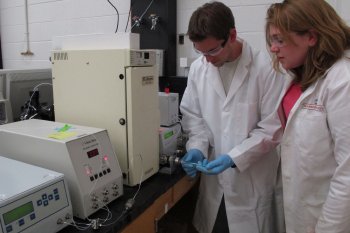"The Viscotek gel permeation chromatography system with triple detection is the most important tool in our laboratory," said Assistant Professor Jason Locklin of the Department of Chemistry and Faculty of Engineering, University of Georgia, when referring to the Viscotek TDAmax system from Malvern Panalytical.
Work carried out by Professor Locklin's multidisciplinary team has demonstrated that adding multiple detector technologies to a gel permeation chromatography (GPC), is highly effective in the real-time investigation of polymerization kinetics and macromolecular structure for both functional polymers and surface initiated polymerization. Compared with other GPC systems, the Viscotek TDAmax delivered more detailed viscometry and light scattering data, which was central to understanding the development, growth and behaviour of new polymer materials.

"Molecular weight and molecular weight distribution [also called polydispersity] are the most important parameters in polymer science," explained Professor Locklin. "We use the Viscotek TDAmax as a tool to monitor the progress of reactions and to evaluate the extent of control in the polymerization reaction. When making new polymers this information is critical to our understanding and tells us if the material is forming properly and if the chemistry is working."
Professor Locklin continued; "The real benefit of the Viscotek system is the online viscometry detection and light scattering. These capabilities provide so much more info than conventional measurements, allowing you to look for polymer structure and branching as well as molecular weight and polydispersity."
Professor Locklin's research group includes ten PhD students focusing on chemistry, biochemical engineering, and textile science. Current projects include such products as anti-microbial coatings, biodegradable polymers, light responsive polymers, and "clickable" coatings.
The Viscotek TDAmax is a gel permeation chromatography (also referred to as size exclusion chromatography (SEC)) system that includes refractive index (RI), viscometry and light scattering detectors making it ideal for the characterization of polymers.